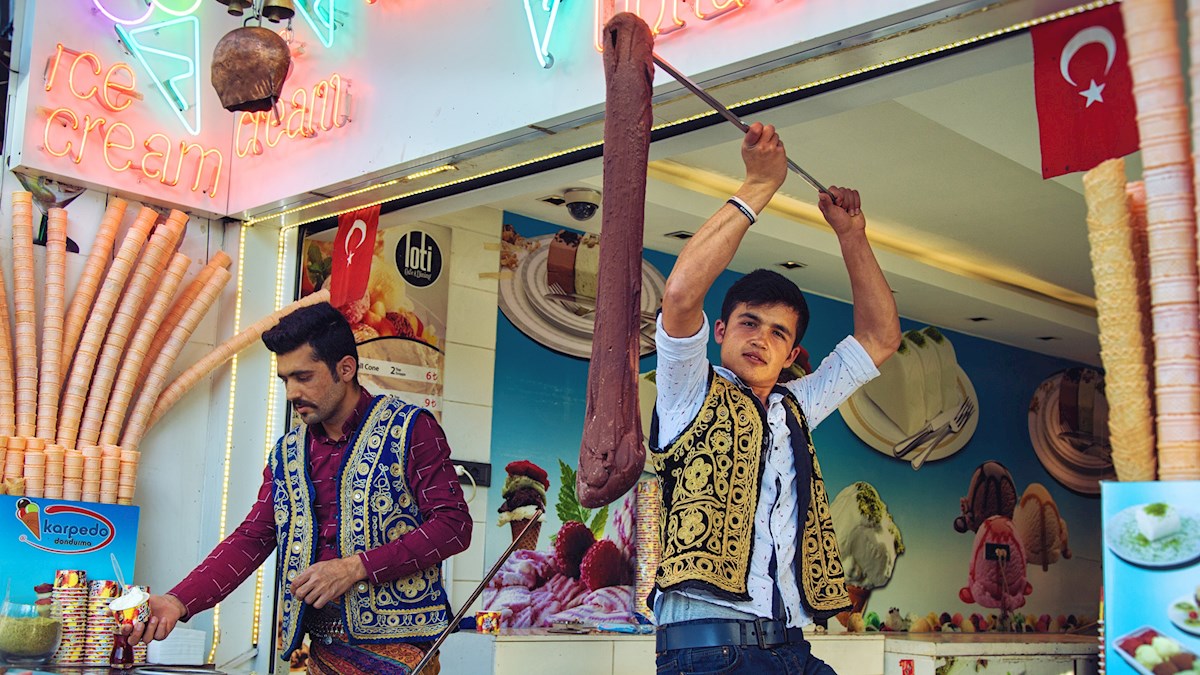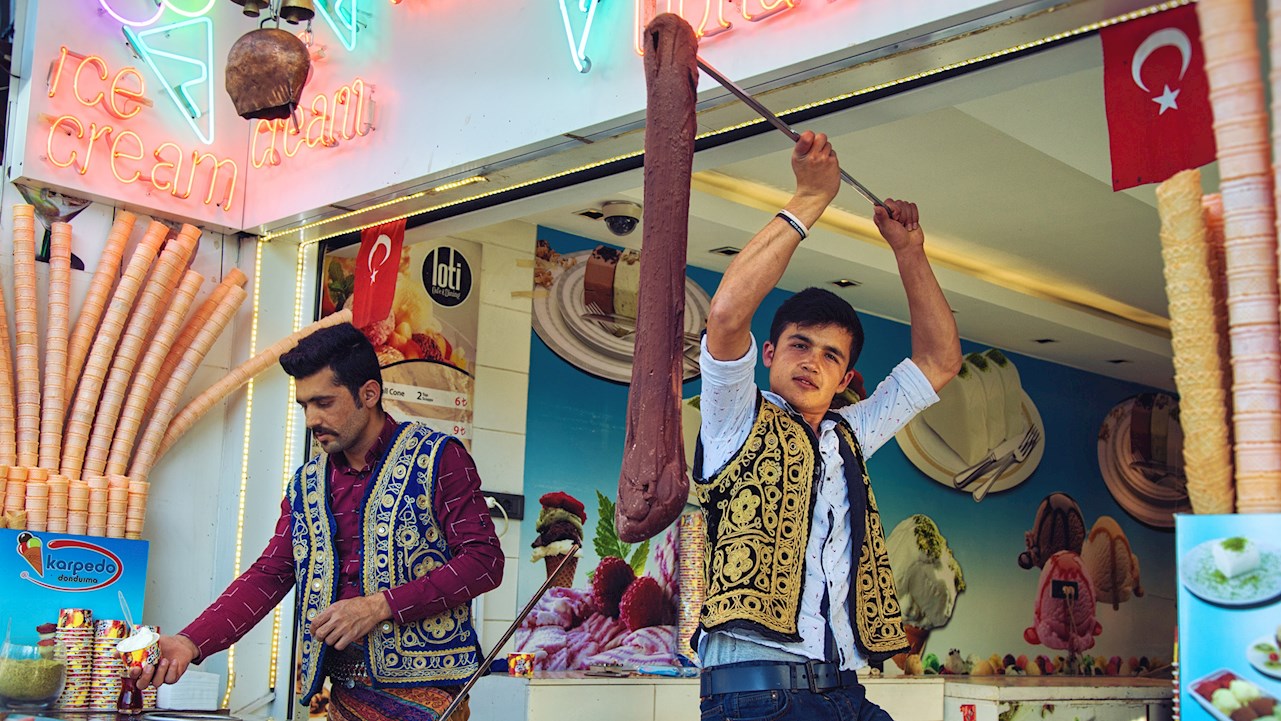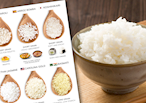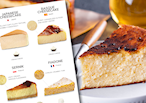Hot town, summer in the city... you said it right, Lovin' Spoonful. It is summer, and it is hot. We need something to cool down. Ice cream, gelato, sundae, kulfi, sorbetes... anything will do!
So we walk outside in the scorching sun or sweltering night, swarming the local frozen treats shop like an army of zombies, just to watch our salvation melt in front of our eyes in a matter of seconds. We try to eat it faster, panicking as it drips on our fingers and clothes, balancing to prevent it from falling on the ground… not enjoying the experience at all.
Hope has abandoned us, but alas, behold: the magnificent dondurma!
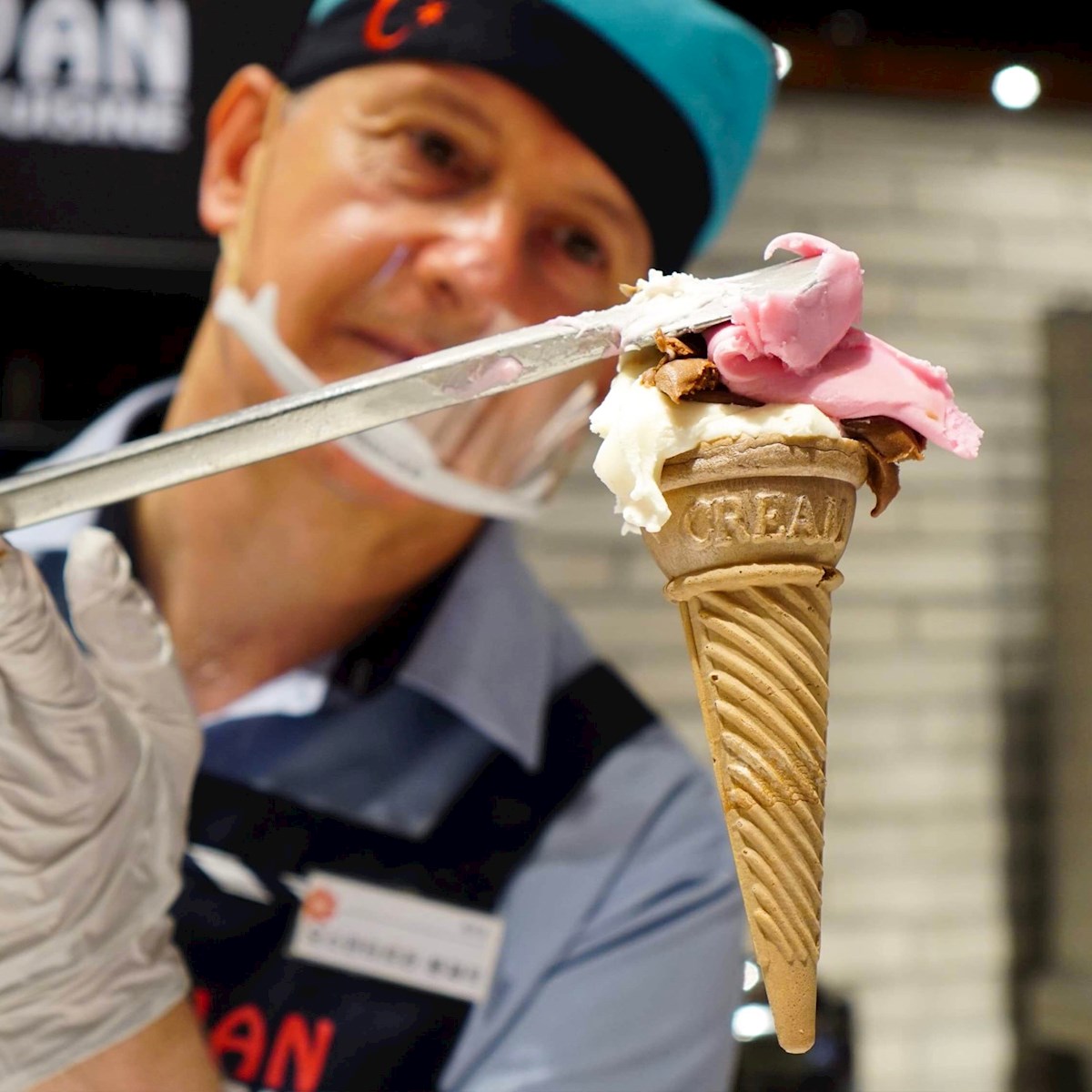
What is this dondurma?
Simply put, dondurma (which translates to “freezing”) is a kind of Turkish ice cream, unique for two reasons: it has a hard, chewy texture and incredible resistance to melting.
This delicious treat hails from the Turkish city Kahramanmaraş, or more broadly, the Kahramanmaraş region, and interesting iterations can be found throughout Türkiye (in case you were wondering, that's the new official name of Turkey) and other Mediterranean countries like Greece, where it’s called dudurmas or kaimaki.
The properties of this frozen dessert earned it the title of “the ice cream that refuses to melt”, but this is in no way the only thing dondurma has to offer.
How it all started?
When talking about ice cream, nobody can be genuinely sure when and where it came from. Desserts and drinks that used gathered snow and ice were enjoyed in ancient Greece and Persia some 500 years BC., and there are legends that Marco Polo introduced sorbet-style desserts to Italy in the year 1296, after his trip to China.
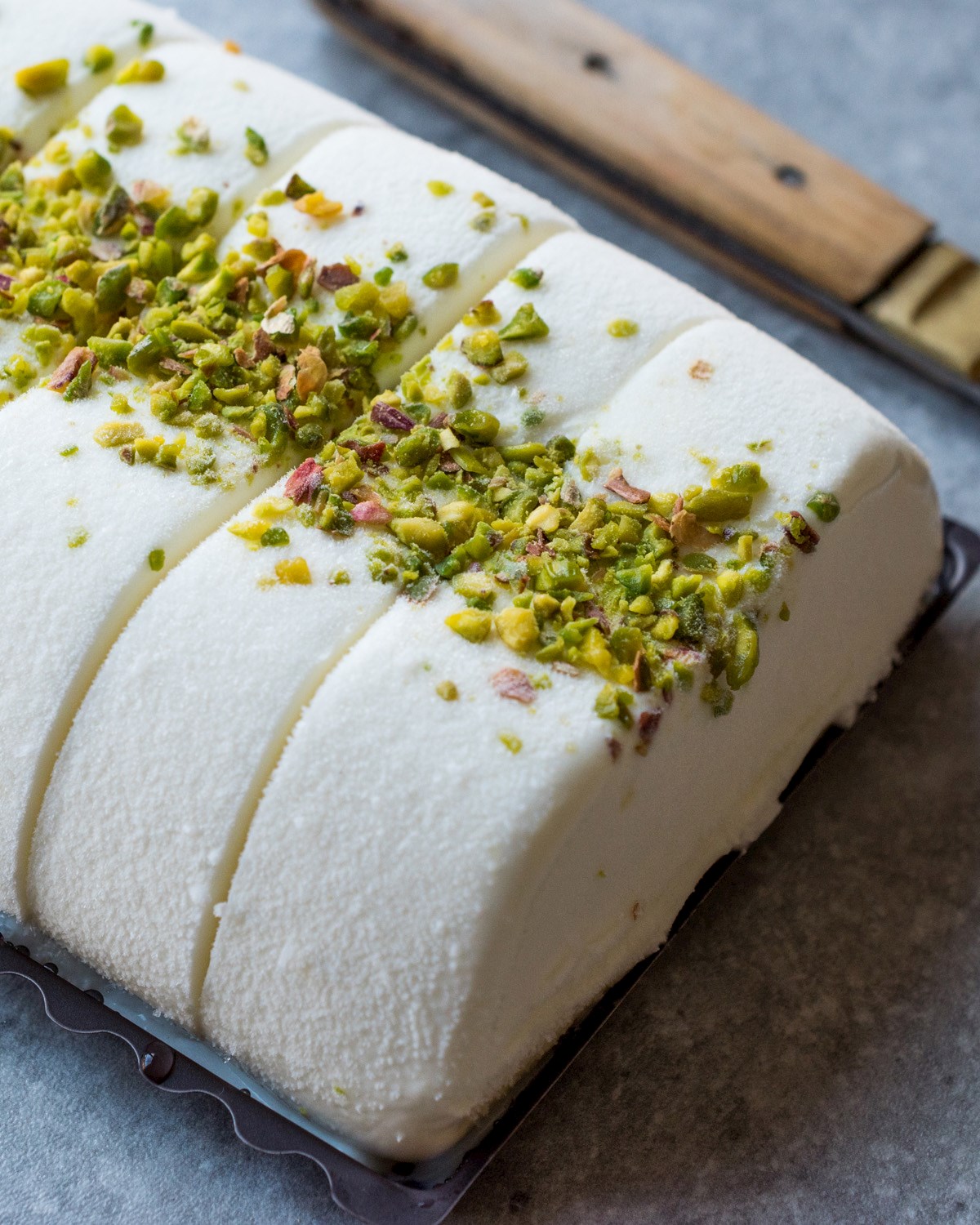
Similarly, it is hard to pinpoint the exact origin of dondurma, but the general consensus is the first people that savored this delicacy roamed the Turkish region Kahramanmaraş some 300 to 500 years ago. The city of Kahramanmaraş, or Maraş for short, was the center of production, and Maraş dondurmasi is nowadays considered to be the original and most traditional form of this ice cream.
What do they make it from?
Traditional dondurma is quite simple ice cream, that needs only a few ingredients: goat milk, sugar, salep, and mastic. But each of these ingredients is unique in its way, and they are the main reason why dondurma is so special and beloved. OK, except the sugar, because the sugar in this case is just sugar.
The milk comes from goats that graze aromatic herbs such as thyme on the foothills of Ahir Mountain (that surrounds Maraş), giving it a distinctive taste and aroma. Goat milk may be an acquired taste, but in this case, it fits the recipe perfectly.
Salep (not to be confused with the Turkish beverage of the same name), a type of flour made from bulbs of an endemic purple orchid growing on the slopes of the Ahir Mountain, gives dondurma a distinctive, thick, sinewy texture. It is a rare and expensive commodity, but nevertheless, Maraş dondurmasi is made with a lot more salep than other varieties of this ice cream, which is exactly the thing that makes it unique.
 Credits: shutterstock
Credits: shutterstock
Mastic is a resin obtained from mastic trees grown on the Aegean coast of Türkiye and Greece, and its main contribution to the dondurma equation is the chewiness it provides. It’s also a rare and exotic ingredient, so some homemade recipes omit mastic and substitute it with more salep. But as in poker, pairs are better than singles, so the best dondurma requires both of these prized ingredients.
OK, so how is it different than any other ice cream?
If there wasn't salep and mastic, dondurma would probably be like any other ice cream. But when you combine salep and mastic with other ingredients, and you freeze the mixture, a chemical reaction that forms a solid structure inside the ice cream is catalyzed, preventing the moisture of the ice cream to get out (which would make it melt) and making it rubbery, resembling taffy.
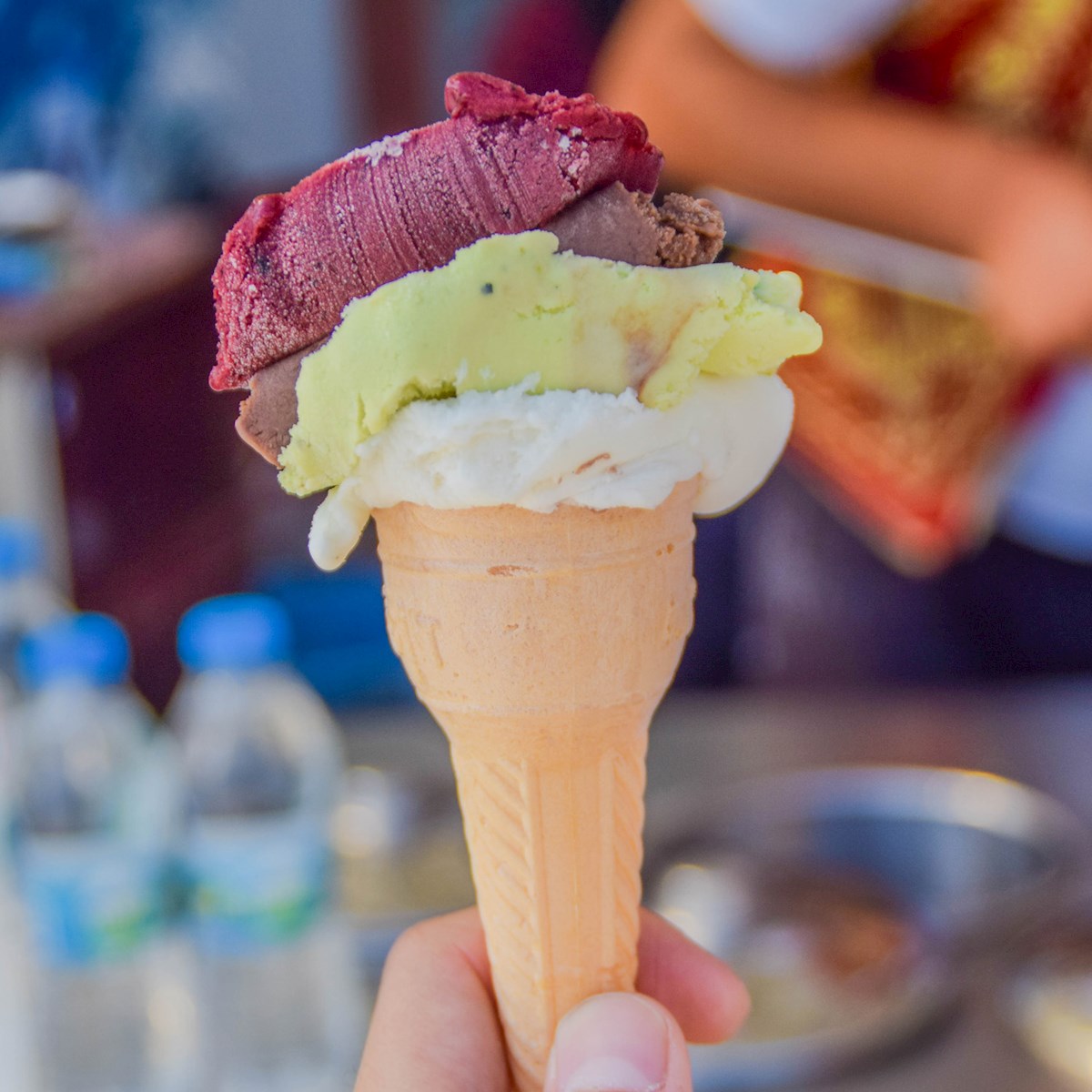
That feature is furthermore amplified by the dondurma manufacturers and vendors, who additionally „beat“ the ice cream with long metal rods and kneed it like dough, the process that is repeated before and after the freezing. Nowadays it's mostly done by machines, but many vendors still do it as a part of a show for their customers.
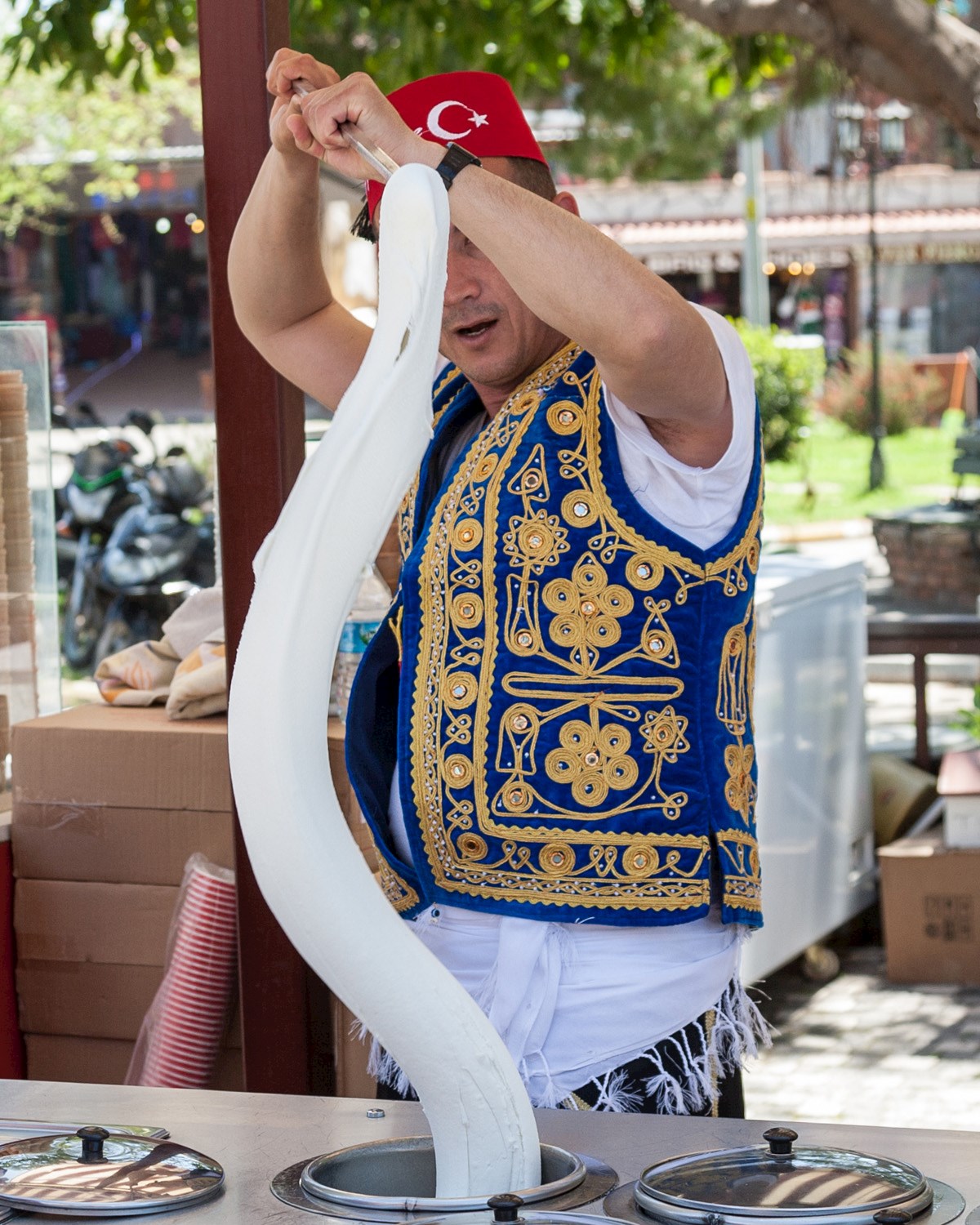
The end product is an ice cream that maintains its shape at room temperature and practically doesn't melt. Vendors will keep it hanging from the meat hooks to prove this property. And it's so deliciously tough, sticky, and chewy that you can eat it with a fork and knife. It might just be the weirdest "steak" you’ll ever have!
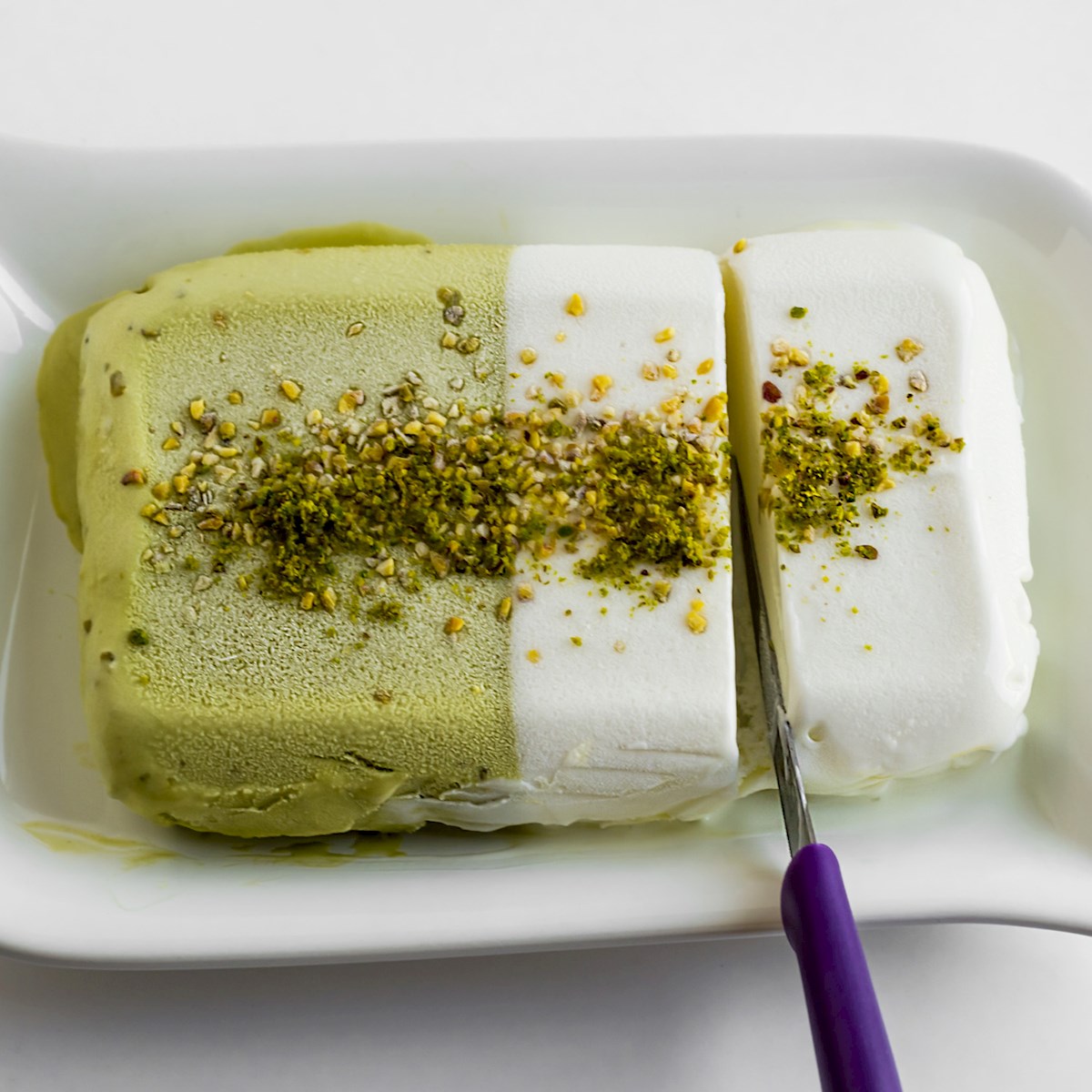 Credits: shutterstock
Credits: shutterstock
When not flavored, dondurma has a subtle savory and piney zest of mastic, and everybody should try it like this at least once. Then, it’s up to your preference, with the most popular flavors being chocolate, pistachio, vanilla, and cherry.
What’s the deal with the vendors?
Probably the best promoters of dondurama are the vendors who are selling it. Twenty years ago, if you’d ask 100 random people outside Türkiye what dondurama is, maybe one would know. Hell, even now, that number wouldn’t be much higher. But if you ask them if they’ve seen a video of a guy twisting a scoop of ice cream on a long metal rod and teasing the customer, chances are that person knows what you’re talking about.
Dondurma vendors are often dressed in traditional Ottoman style, which means white shirts and intricate red or blue waistcoats, with a fez on their heads. Set behind their cart or a counter, they will tease the customer in a comical way, serving the ice cream using those long metal rods, only to pull it back at the last moment, leaving the customer dumbfounded.
This little performance may last for up to a minute, but it’s a great showcase of how thick, sticky, and consistent the ice cream truly is, and how the stories about it never melting are indeed accurate.
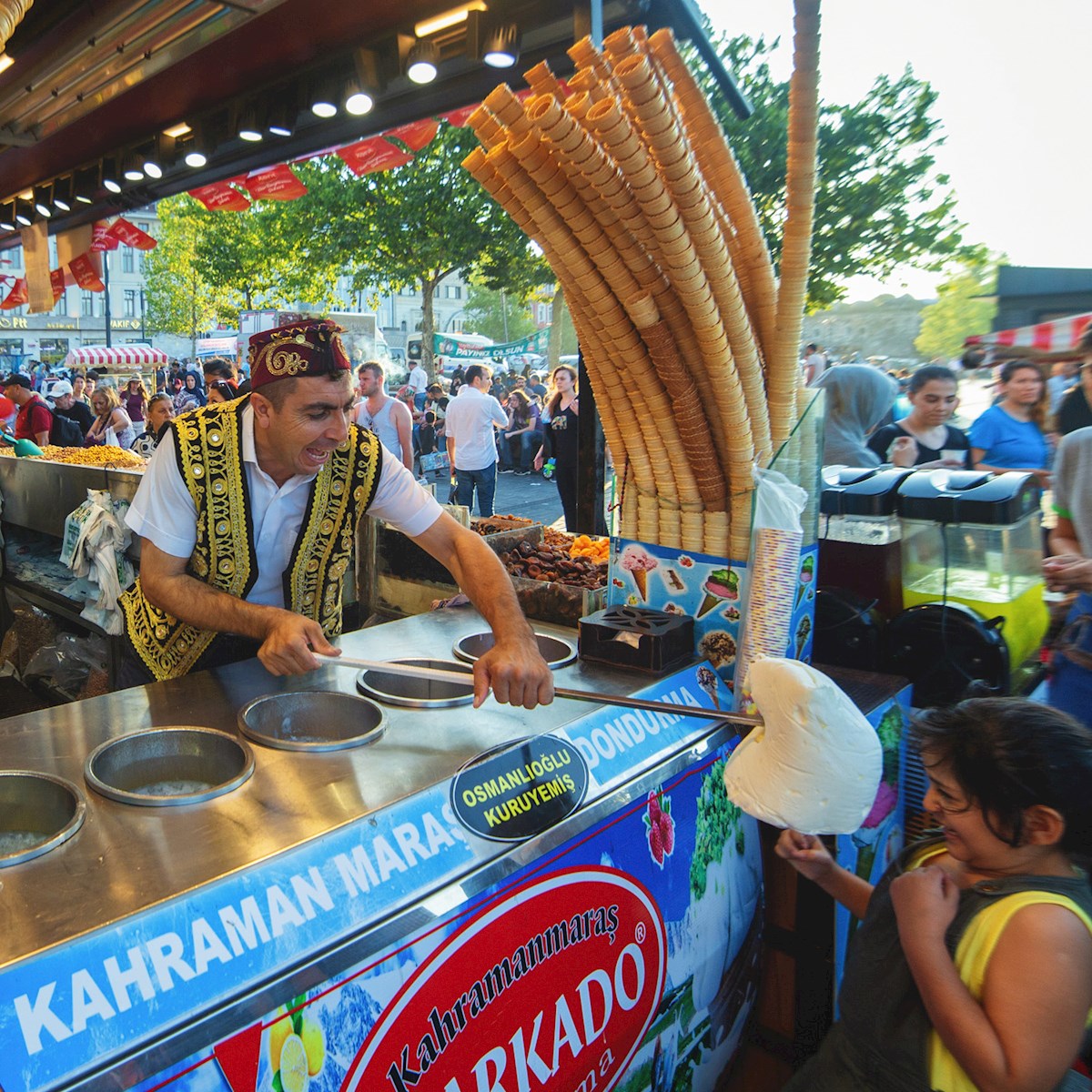
In the end, the customer gets his ice cream, and maybe shares the video of the whole bamboozle show with his friends or on social media. After all, you cannot see this kind of stuff every day. So, the legend of dondurama and its wacky vendors spreads. And this is becoming a problem.
Is dondurma sustainable?
As with everything natural, if you exploit it too much, there is a real chance that there will come a time when that resource becomes scarce. And that is even more emphasized with a resource that is already very rare. Like salep.
The popularity of dondurma caused a massive decline in the population of wild orchids, which are the only source of salep, and endemic orchids of Ahir Mountain are among the most endangered ones. Orchid pickers cut the bulb of an orchid to make salep, and that means the inevitable death of a plant. With no efficient method of commercial wild orchid cultivation, dondurma quickly turned from a gastro-hit to a serious problem, because one kilogram of dried salep requires up to 1,000 orchid plants.
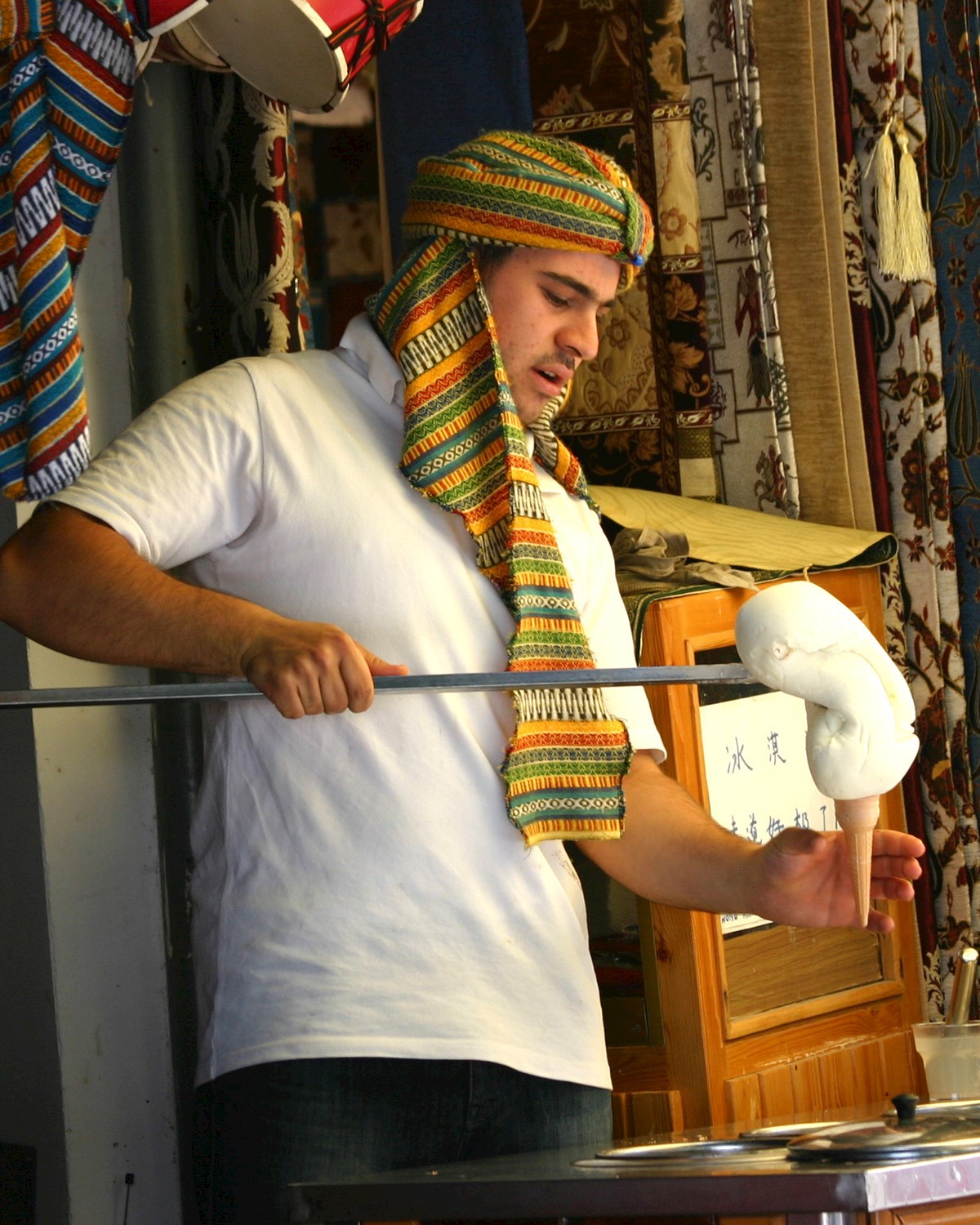
That’s why the government banned the export of salep. So, most of the dondurma you taste outside Türkiye is likely not the real deal because it doesn’t contain the prized ingredient. Instead, manufacturers use konjac flour, guar gum, carrageenan gum, and vegetable glycerin to achieve the same effect. You will probably come across manufacturers that use these ingredients even in Türkiye, but there are some safe bets for this extraordinary pleasure.
Where to get some dondurma?
Although the best dondurma hails from Maraş, you can find dondurma shops and carts in every popular tourist destination in Türkiye. But Istanbul is rightfully so a dondurma capitol of the world.
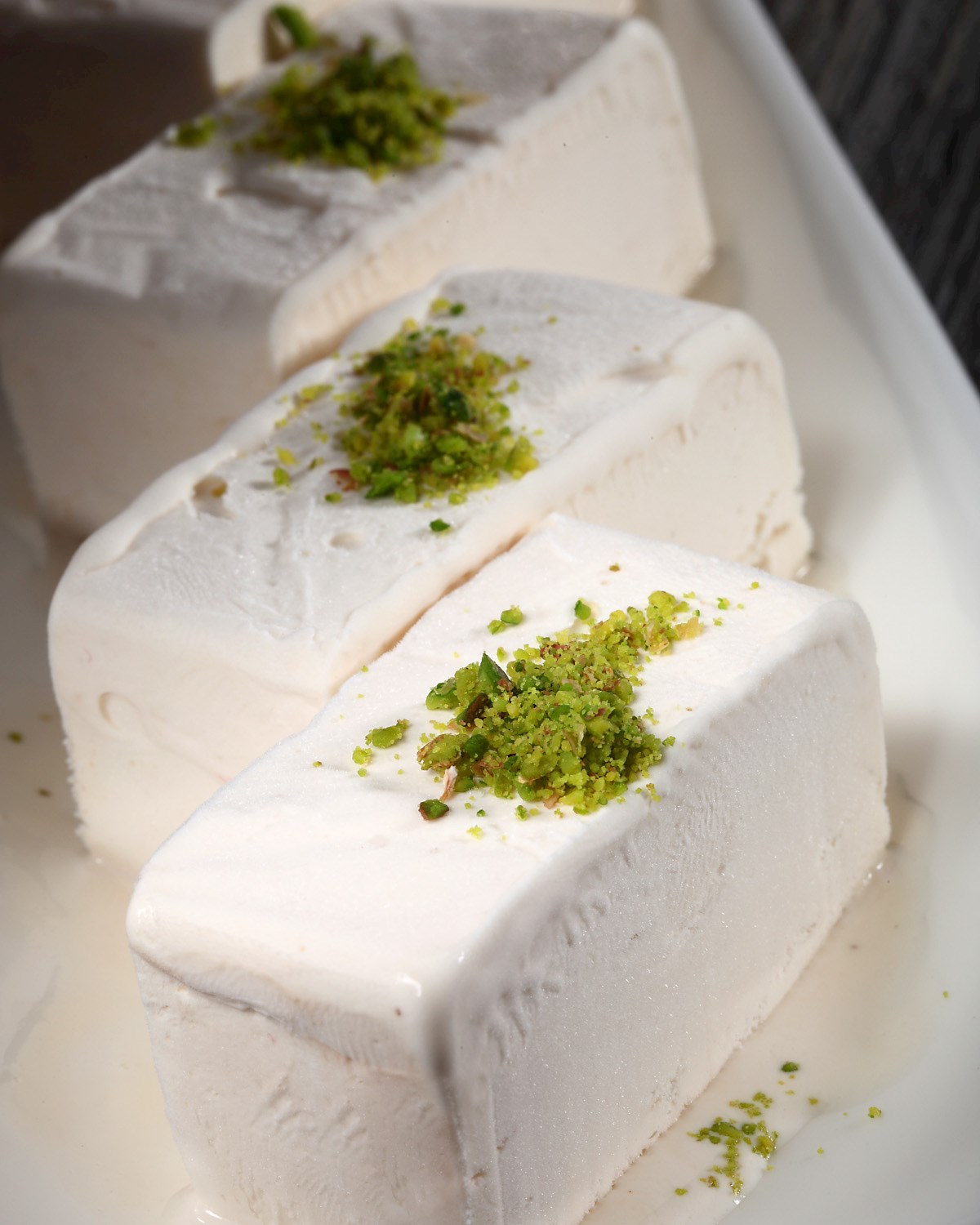
Legendary Dondurmacı Ali Usta and Mini Dondurma have been serving this treat for over 50 years, and are at the top of the dondurma pyramid. You won’t miss if you go straight to Yaşar Usta Dondurmaci, or even Mado, probably the biggest dondurma chain in Türkiye with more than 80 shops across the country.
Read more:
Check out 83 frozen desserts around the world
